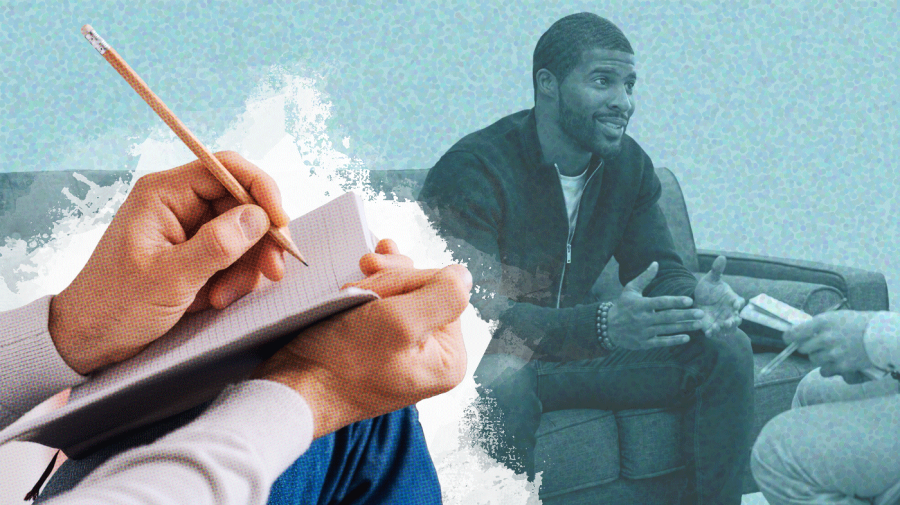Why more Americans are going to therapy

The number of Americans seeking mental health treatment is almost twice as high as it was two decades ago — reflecting a historic recent decline in mental health but also an increase in virtual care access and a positive trend of destigmatization.
In 2004, just 13 percent of adults said they had visited a therapist, psychiatrist or other mental health professional within the past year, according to Gallup polling. In 2022, that number was up to 23 percent.
While the shift began before COVID-19 arrived, the pandemic drove a new surge in demand for care, particularly among young adults. The share of Americans aged 18 to 44 who had received mental health treatment like medication, counseling or therapy over the past 12 months jumped from 18.5 percent to more than 23 percent between 2019 and 2021, data from the Centers for Disease Control and Prevention show.
“Without a doubt, shortly after the pandemic started there was a huge demand for our services,” said Daniel Fridberg, associate professor of psychiatry at the University of Chicago.
A majority of psychologists reported seeing more patients seek help for disorders related to anxiety, depression or stress in 2020 — and again in 2021 and 2022, according to an annual survey from the American Psychological Association.
Many health experts link the increased demand to plummeting mental health during the pandemic, which led to spikes in the number of Americans reporting depression and anxiety.
Some health experts think the numbers tell another story, however: one about the success of teletherapy.
“I think there is evidence for the rising rates of depression, especially among young people,” said Mark Olfson, an Elizabeth K Dollard professor of psychiatry, medicine and law and a professor of epidemiology at the Columbia University Irving Medical Center.
But, he added, “the most important factor driving the increase in demand for psychotherapy is a basic structural change, how psychotherapy is delivered.”

Telehealth was rarely used prior to the pandemic, accounting for just 1 percent of outpatient visits for mental health and substance use issues, according to data from health policy research organization KFF. Usage skyrocketed in 2020, with telehealth making up 40 percent of mental health and substance use outpatient visits between March and August of that year. It was still high a year later as well, even as other outpatient care largely returned to in-person visits.
Telehealth mental health services have their downsides. It is harder for mental health professionals to pick on up on body language in a teletherapy session compared to an in-person session, and the potential for distractions from background noise, pets and other family members is higher during a teletherapy session. But data shows that virtual therapy or counseling work for many patients.
A survey of 1,200 people conducted by YouGov and Forbes Health last year found that 63 percent of people who underwent teletherapy reported it was effective.
One appeal of teletherapy is convenience, Olfson explained, since appointments can be conducted anywhere with phone or internet service.
Another draw is privacy.
“[People] no longer have to drive across town and sit in a waiting room where their friends or neighbors may see them while they are waiting for a counselor or psychotherapist,” Olfson said.
More Mental Health Awareness Month coverage from The Hill:
- Employees love remote work, but is it good for our mental health?
- How America is grappling with its teen mental health crisis
- Are mental health apps harmful or helpful?
There is still stigma attached to mental illness and seeking help to work through it. But that stigma is weakening, especially among young people — another factor that has contributed to more Americans receiving mental health treatment in recent years.
Studies show that Gen Z, consisting of those born in 1997 or later, is far more comfortable speaking about mental health than older generations. And Gen Zers are also more likely to have received treatment for their mental health or gone to therapy.
A 2019 report from the American Psychological Association showed that 37 percent of Gen Z had received psychological treatment or gone to therapy compared to 35 percent of millennials and 26 percent of Gen Xers.
“When I talk to my younger patients, many of them are rather open with their friends about their mental health, they are rather upfront about it,” said Fridberg of the University of Chicago. “They talk about going to therapy, they talk about their diagnosis, they talk about what steps they are taking to address it. That’s a real shift.”
While more Americans are seeking out help with their mental health, however, there aren’t enough professionals to treat them, and that gap is expected to get worse.
The Department of Health and Human Services has estimated the national deficit in mental health care providers — including positions ranging from psychiatrists to school counselors to family therapists — could amount to a shortfall of more than 10,000 professionals by 2025.
Copyright 2023 Nexstar Media Inc. All rights reserved. This material may not be published, broadcast, rewritten, or redistributed.

